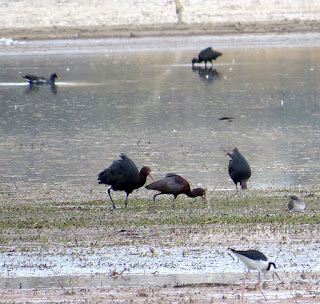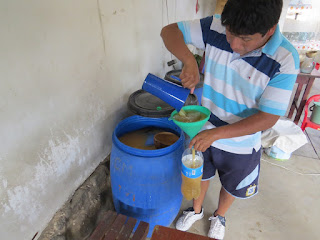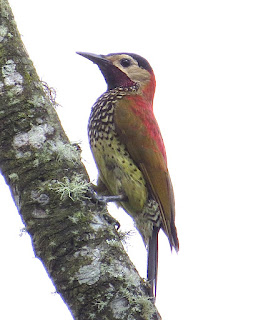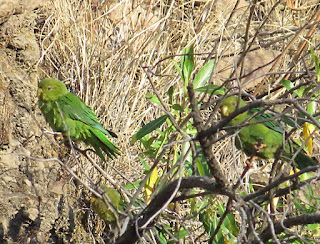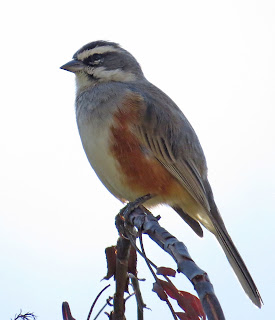September
25, 2015
I saw two
lifebirds today, my only ones on the tour. The first was at a wetlands not far
from our hotel, where Gray-bellied Shrike-Tyrant had been reported in the past
couple of years by my friends. I didn’t have high hopes, as it’s supposedly
only a wintering bird here (migrating back south to breed), and I didn’t have
any specific locations. But there it was. I got a bad photo.
At these
same wetlands we found a very lost Maguari Stork, normally found in the
lowlands.
Wren-like
Rushbirds were everywhere, often walking out in the open on floating mats of
algae, so I’m surprised I didn’t get a better photo. This is a furnariid that
has evolved an amazingly similar size, color, pattern, and behavior to Marsh
Wren though the two don’t occur together. Is there something about these
characters that make them suitable for surviving in rushes and cattails, did
they once co-occur and evolve under some sort of social-dominance mimicry
selection, or is it total coincidence?
On the other
hand consider this unique Many-colored Rush-Tyrant. It is never quite as common
as the rushbird, but usually not hard to find in the same habitat. No other
tyrannid is so colorful, nor with the same habits. Its internal morphology and
now genetics are known to be distinctive enough that the latest analysis has
proposed that it be placed alone in its own family, Tachurididae. (Jan I.
Ohlson, Martin Irestedt, Per G. P. Ericson, and Jon Fjeldså̊. 2013. Phylogeny
and classification of the New World suboscines (Aves, Passeriformes). Zootaxa
3613 (1): 001–035.)
One last
bird we found here was this Brown-backed Mockingbird.
We then
headed to Laguna Alalay in the middle of the city. It was full of water birds,
and this is where I finally saw my lifer Red-fronted Coot. It took a lot of
searching, but we eventually saw a few (three or four years ago my friends were
reporting dozens). Seeing these Puna Ibis together White-faced Ibis was a
treat. Notice how the latter (a rare bird here) has longer legs and longer,
thinner neck and bill. It was this sighting that caused me to reevaluate the
ibis we had seen north of Camiri in the lowlands; I had assumed they were
White-faced, but our photos show the characteristics of Puna. Migrants to the
lowlands? (Other birds in the photo include Common Gallinule, Greater Yellowlegs, and Black-necked Stilt.)
Another
special mix of birds were these Red Shovelers (rarish here), White-cheeked
Pintail, and Puna Teal.
Due to
popular demand, we made a stop at the Mercado San Antonio before our final
lunch, packing, and departure by flight to Santa Cruz. We had hoped for some
fine knitted alpaca garments and especially for some spun alpaca yarn for
knitting, but Bolivia hasn’t quite figured out this wide open market.
Apparently on Wednesdays and Saturdays there is one woman who has a sidewalk
stand where she sells her own hand-spun yarn, but you have to ask five people
before you find out that she even exists, and today is Friday.
I’m looking
forward to 10 days at home, but it’s going to fly by. I have a first aid/CPR
recertification class, a day of birding with my friend Doug Futuyma, a half day of guiding a couple around the Tucson area, and
several lunch and dinner plans with dear friends, as well as a last planning
meeting with Keith and Patty before I meet up with them in Southeastern Brazil
for a scouting trip at the end of the month.





